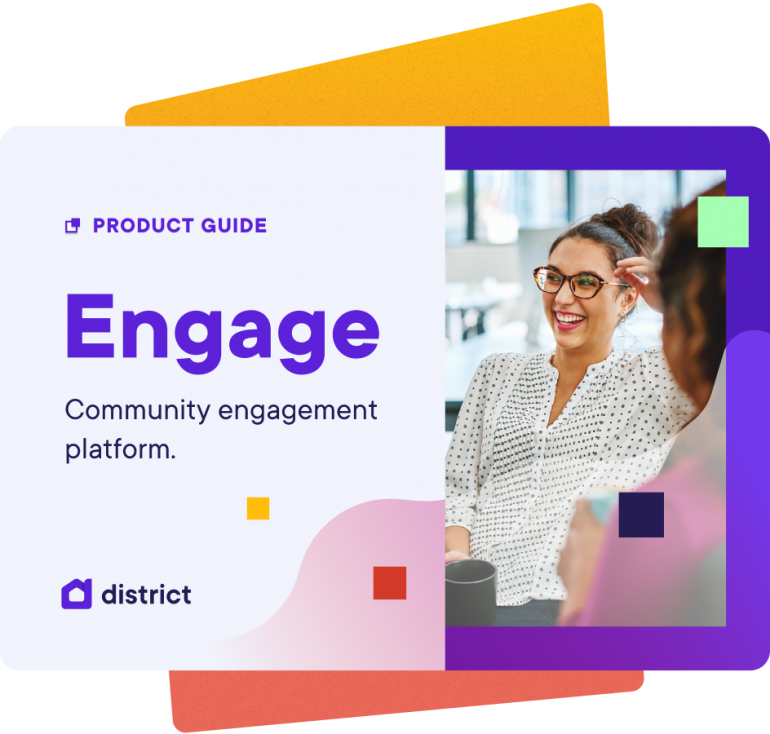In the past couple of years governments around the world have been exploring ways to improve the ways their citizens can engage with the democratic process.
While this upswing towards public participation has occurred at roughly the same time as the Covid pandemic, the movement actually has deep roots, and has been brewing for a while.
However, the social upheaval caused by the pandemic has propelled the design and delivery of digital tools that have helped to increase public participation in community decision making.
Building trust through community engagement
“Deliberative democracy” is a term used to describe deliberation in policy making: the idea that good decisions are made through a process of authentic discussion and consensus - not just by winning more votes. While the term has been around since the 1980s, it has become a bit of a hot topic in recent years, in the light of increasing polarisation in political discourse.
In 2020, the OECD released a report into deliberative democracy called “Innovative Citizen Participation and New Democratic Institutions: Catching the Deliberative Wave.” Its findings were groundbreaking. It suggested that deliberative practices:
"can potentially increase trust in government, strengthen democracy and enrich society’s democratic fitness by creating more opportunities for people to shape public decisions."
Not surprisingly, it introduced a flurry of innovative initiatives by governments across the globe, keen to empower their citizens to engage in their democratic rights with online polls and citizen assemblies.
In Australia, the Victorian State Government responded to the OECD report by introducing the Local Government Act 2020. This stipulated that Local Councils and LGAs must adopt and maintain a community engagement policy ensuring that
“all Victorians have the opportunity to engage with their council on local priorities and the future of their community."
As a result, over the past couple of years local councils and LGAs throughout Victoria have incorporated community engagement practices into their services.
What does this look like? There’s no one-size-fits-all solution. Manningham City Council, in Melbourne’s eastern suburbs, partnered with District to engage the CALD community in a series of co-design workshops to design the council website around the needs of the migrant and non-English speaking population.
Meanwhile, the Victorian Government launched its own community engagement platform, powered by our community engagement product.
Digital tools transform public consultation
Engage Victoria uses digital tools such as surveys, quick polls, text-based responses, forums and chat groups to consult with the community on a large range of public projects. The online platform means that the public consultation process is accessible to a wider group of citizens, and individuals can engage on projects that directly affect them and their communities.
At the same time, the data associated with increased engagement provides the government the ability to get a better understanding of community needs through real-time data analysis and reporting.
While digital solutions to facilitate community engagement will increase in scale and scope, the principles of transparency, accountability and collaboration should always guide the design and implementation of new technologies.
Designing for deliberative democracies
According to author and engineer Jessica Feldman, it’s important to have a “vigilant connection” between engineering decisions and political values. In her article, “Engineering for a Deliberative Democracy” she considers algorithmic governance, transparency, privacy and security and even the potential loss of quality listening in online assemblies, as needing careful consideration when designing digital engagement tools.
But there are three key elements, she suggests, that developers should keep in mind:
- Path Dependency: our habit of building on current infrastructure and tools should be maintained in new designs.
- Open Source: the code that underpins our decision-making and deliberative procedures should be publicly available.
- Participatory Design: the tools for community engagement should be designed and tested with the involvement of those communities who will be using them.
Co-design equals great design
The recent launch of Victorian Public Notices is an example of digital design that incorporates these key elements.
Victorian Public Notices is an online platform for the publishing of statutory public notices. These notices have traditionally been published in newspapers. But as part of the push towards digital transformation of government services, they are now published online, making them more accessible to the wider community.
Built upon District Engage, the same platform that delivers Engage Victoria, Victorian Public Notices was conceived as an extension of the existing Engage Victoria framework. Basing it on the existing open-source IP allowed for a rapid turnaround - in this case less than four months from concept to build.
Key to the successful rollout were the co-design workshops and close collaboration between District, Digital Victoria and more than 20 government departments. These discussions and workshops led to the creation of unique teams-based workflows and permissions workflows in the design framework, replicating and refining the complex processes of internal government departments.
The design of Victorian Public Notices points to ways the IP framework could be further expanded to meet the needs of other government agencies or organisations working in the community engagement space.
But collaboration and co-design with the people that use the technology is fundamental to designing the right tools for their unique needs.
Join the conversation
So what does the future of digital tools for community engagement look like? Issues about AI moderation, reporting, consulting and best practice are all on the table.
Over the next few months, District is bringing together industry experts, UX designers and Product Designers for a series of workshops and forums exploring what the future of community Engagement might look like.
We invite you to join the discussion to ideate tools, discuss solutions and help shape the future of the community engagement industry.




